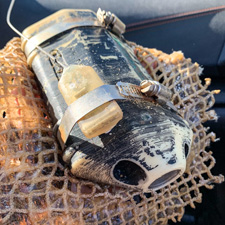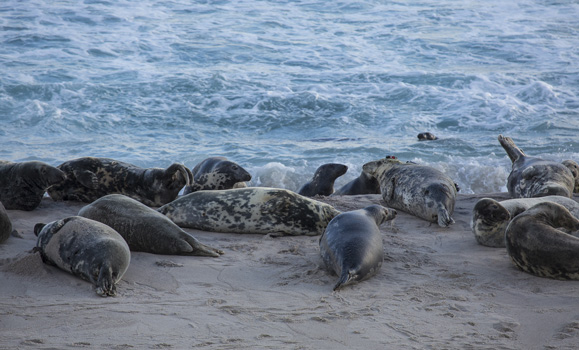A rare and expensive piece of research equipment was found in the Atlantic Ocean after going missing in 2017, and it could hold valuable information about the behaviour of grey seals on Sable Island.

The item is a small digital camera that was attached to the fur of a grey seal, which went missing after a male grey seal from Sable Island journeyed into the Atlantic Ocean with the camera on its back and did not return with it.
It was discovered by two fishermen recently among their catch of surf clams on the Banquereau Bank, an area 400 kilometres east of Nova Scotia.

“We’ve studied grey seals for decades and they are very tractable. They return very predictably to breed,” said Sara Iverson, principal investigator on this project and scientific director of Dalhousie University-based Ocean Tracking Network (OTN).
But this grey seal did not return as expected, and the camera, which costs close to $10,000, was lost.
Damian Lidgard, an OTN investigator and a biologist with DFO, said the camera was built in a way that can withstand extreme conditions at sea, which is what makes them so expensive.

Get breaking National news
READ MORE: Shark seen feeding off N.S. by whale watchers was young great white: marine biologist
He said the reason why they put the camera on a male seal early in the program instead of a more dependable female is that females don’t do much on land for three weeks during the breeding season, so they wouldn’t be able to get any footage.
“These young males, they come ashore, they wander around the island and they spend some time out at sea. So you catch one of these males, attach the camera and they’ll be back in a few days,” said Lidgard.
“In this particular case, it’s just really bad luck that the male we chose decided not to come back. And then I spent like three, four weeks every day hoping that this male would come back. He never did,” he added.
Lidgard explained it’s extremely difficult studying the foraging behaviour of an animal that spends most of its lives at sea, and this camera can help change that.
“I much prefer to be able to see the animal and see what it’s actually doing rather than making assumptions,” he said.

Iverson said the team has now chosen to only deploy the cameras on pregnant females. However, Lidgard said it’s still important to track male seals to understand their behavior.
“We know there is a very high percentage chance that (the female seals) are going to return. And the breeding season in January,” Iverson said.
The team has also put little radio transmitters on the seals so that when the researchers get to the island in January, they can use that to locate the animals more quickly.

Researchers at the university have been studying and tracking grey seals since the early 1990s.
“We actually have a huge data set and it’s really unique. It’s probably one of the three species that in the world have been tracked so thoroughly,” said Iverson.
So far, more than 90 per cent of the time, the team has been able to recover the cameras where they were refurbished and redeployed.
“That’s always the hope, so with this particular camera…it was sent back to the manufacturer. They will try to extract whatever data is still on the camera and then try and refurbish the battery and we could theoretically redeploy it,” she said.
She said she and the team are waiting in anticipation to see what data may be able to be retrieved from it.



Comments